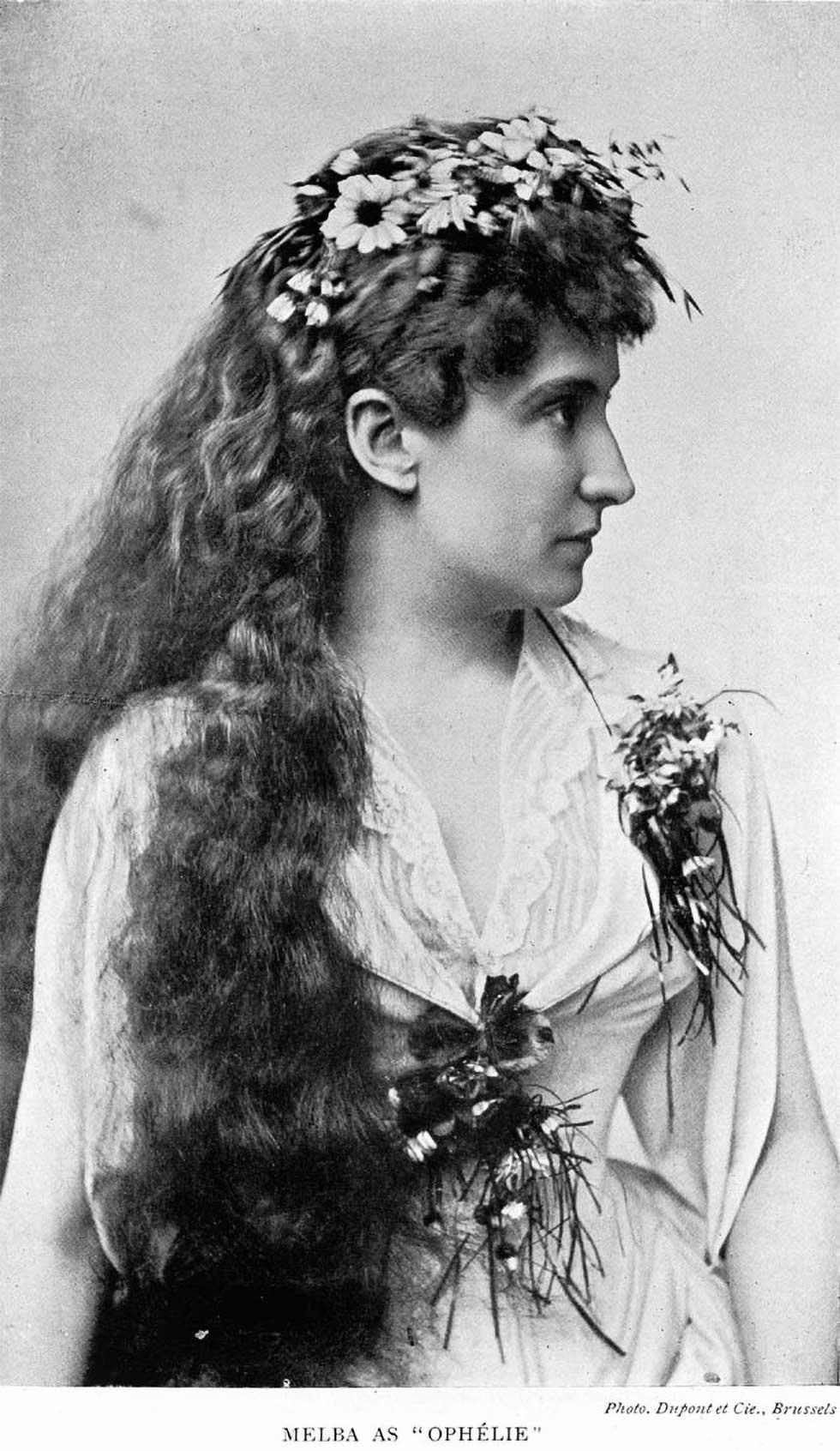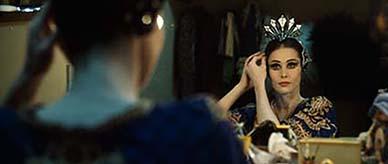


About this record
This is a black-and-white photograph of Dame Nellie Melba (1861–1931), Australia's famous soprano opera singer. In the photograph she is dressed as Ophelia from the opera Hamlet, with long flowing hair and flowers. The opera is based on the play by William Shakespeare, with music by Ambroise Thomas and libretto by Jules Barbier and Michel Carré.
Educational value
- Is a portrait of Dame Nellie Melba, Australia's first big international celebrity – christened Helen Porter Mitchell and nicknamed Nellie as a child, the singer took Melba as a stage name in honour of her hometown, Melbourne; after a moderately successful career in Australia, Melba went to Paris in 1886 to train with the celebrated vocal teacher, Mathilde Marchesi; international success followed her European operatic debut in Brussels in 1887 with Melba appearing in all the major opera houses and establishing herself as 'prima donna' (principal woman soloist) at London's Covent Garden; in 1902 she began her first tour of Australia and New Zealand, where she was greeted as a celebrity.
- Is an early example of a publicity photograph – Melba was very conscious of her public image and was one of the first celebrities to control the way she was portrayed; she was often photographed in costume and there are numerous depictions of her as the youthful Ophelia; such images recalled her tremendous successes in Hamlet in which her rendition of Ophelia is still praised for its beauty.
- Shows Nellie Melba early in her career – although based in Europe throughout her singing career, Melba remained in Australia during World War I, working for war charities that raised money to aid wounded soldiers, and it was because of this work that she was made Dame Commander of the Order of the British Empire in 1918; in 1927 she was made Dame Grand Cross of the Order of the British Empire for services to Australia; Dame Nellie is commemorated on the Australian $100 note.
Acknowledgments
Learning resource text © Education Services Australia Limited and the National Archives of Australia 2010.
Need help with your research?
Learn how to interpret primary sources, use our collection and more.

